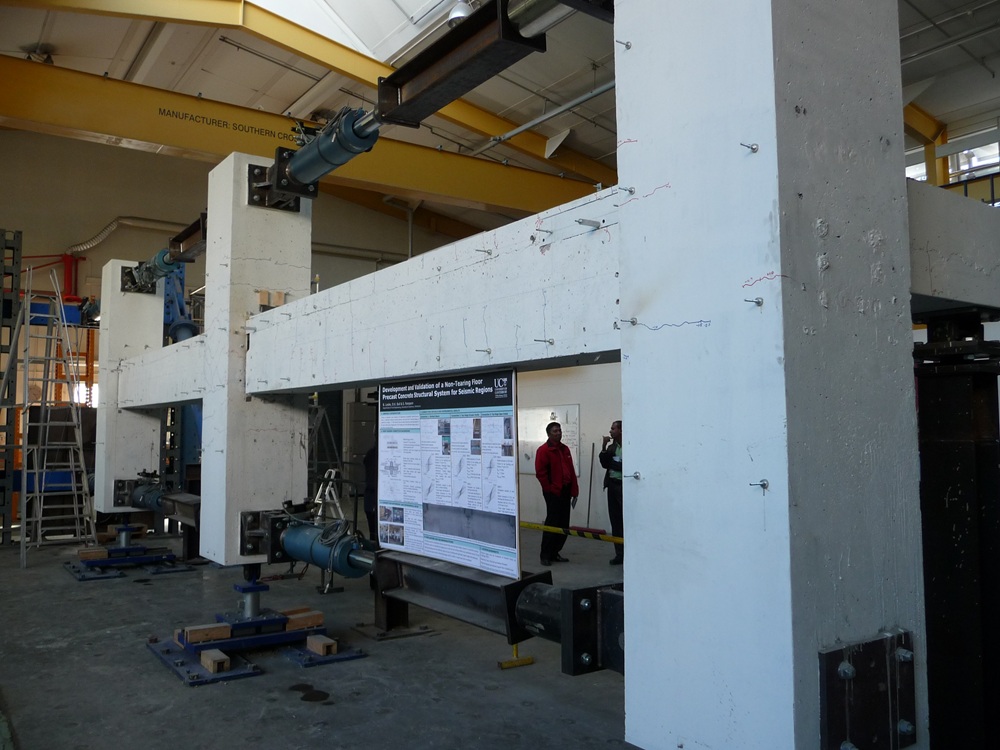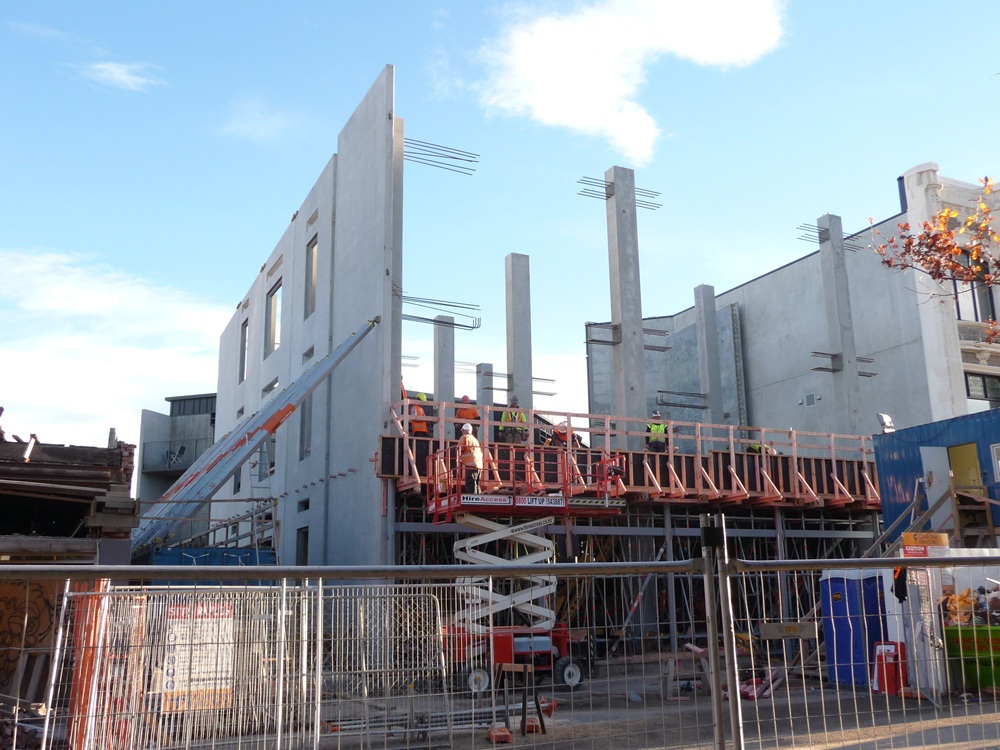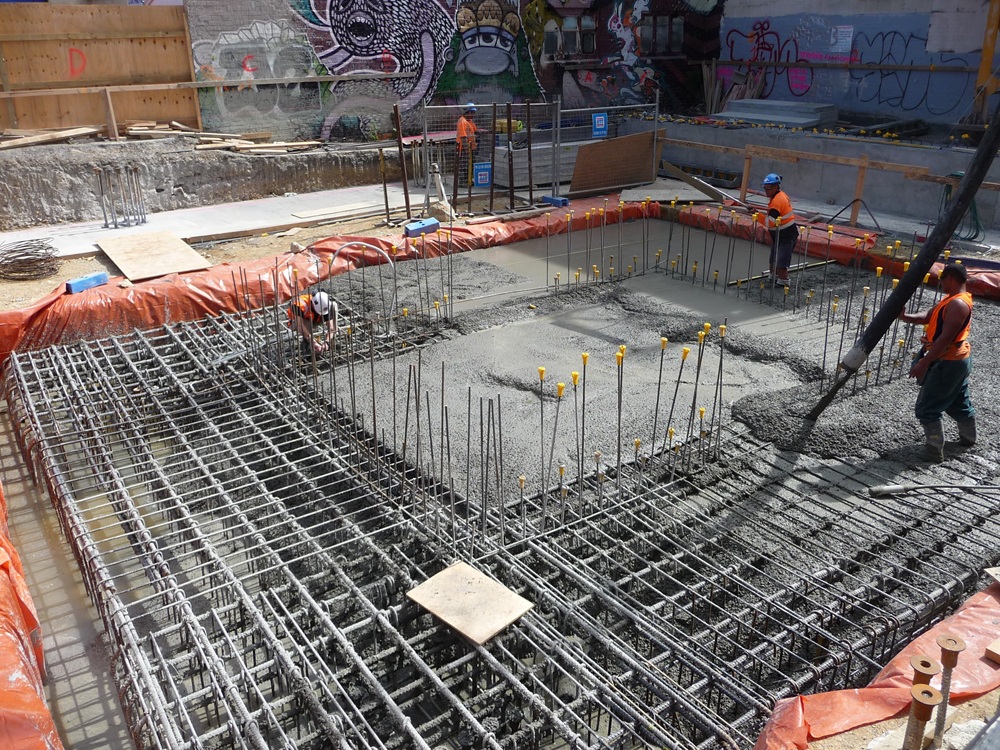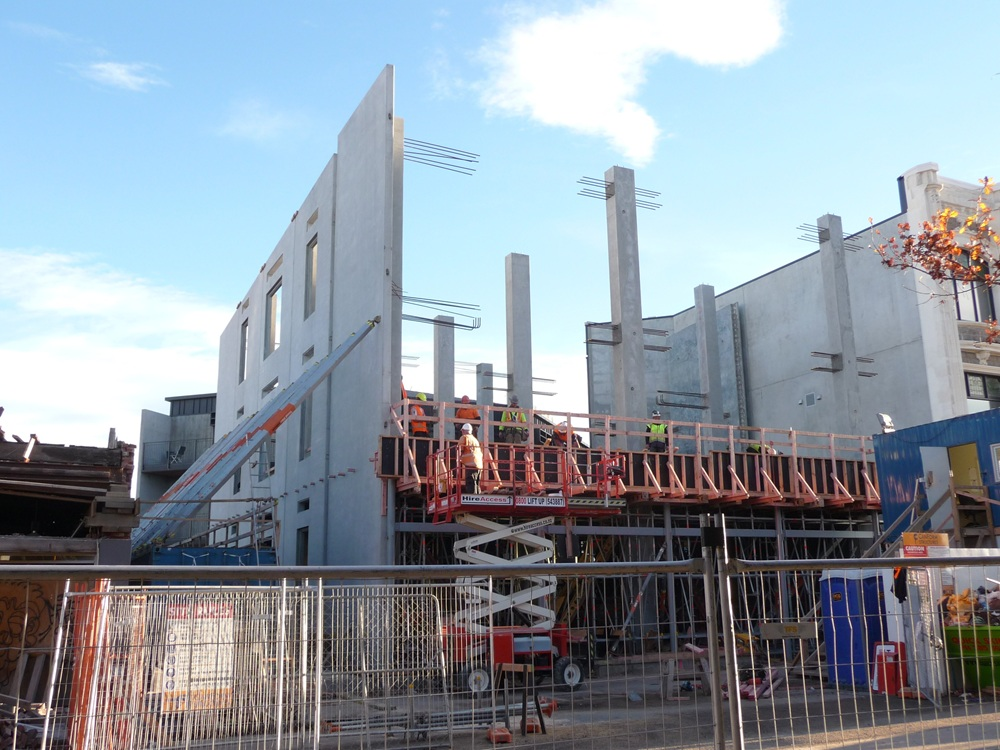RESOURCES SERIES: Earthquake-safe Buildings
ARTICLE 16 in a series of Educational Articles for Developing Nations to Improve the Earthquake Safety of Buildings
ABOUT THIS SERIES OF RESOURCES >>
The purpose of construction codes and standards is to ensure, first of all, that your building is safe. Secondly, that it is free of defects like sagging beams during its lifetime, while using materials efficiently. Codes and standards are usually produced by teams of experts from universities, engineering practice, government departments and contractors. Members of these teams draw upon their own research and experience (Figure 1). In addition, they review the latest developments overseas. Where appropriate to local conditions these developments are included in new or updated codes (or standards). When published, a code represents the state-of-the-art recommendations for safe, long-lasting and economic construction.

Figure 1. Full-scale reinforced concrete columns and beams being tested in a laboratory.
Like every industry, however, the construction industry experiences change. New materials, new construction techniques, and new design approaches are constantly developed (Figure 2). Change and innovation arises from contactors and researchers. This means codes need to be updated regularly. If not, they lead to both unsafe and uneconomic buildings.

Figure 2. This building contains innovative examples of the use of precast concrete.
Codes set best practice standards of construction. Their rules must be followed for your own sake, assuming you are the building owner or occupant, and for the sake of the wider community. Failure to adhere to certain standards causes serious consequences. Consider, for example, what could happen in another situation where standards are not followed. Imagine a doctor examining you when you are ill. If the doctor takes shortcuts during the examination to save time, like not measuring blood pressure or requesting an X-ray, the diagnosis might be incorrect. In that case, the prescribed medicines will be ineffective and your illness will worsen. Codes and standards protect you.
Following codes is most important where situations are complex and personal knowledge and experience is limited. Designing and constructing a building to resist earthquakes is such an example. Almost no civil engineers, architects and builders have personally witnessed what happens to buildings during a large earthquake – how they suffer increasing damage until eventually collapsing. Neither have most building professionals personally observed scientific laboratory tests of building elements, like columns and beams, being subject to experimental earthquake movements. Codes compensate for the lack of personal experience, knowledge and wisdom regarding earthquakes. Following codes is the only way to safe construction.
Codes provide guidance at all stages of building design and construction (Figure 3). Civil engineers and architects must adhere to certain standards during design and construction phases. Builders must ensure materials and methods of construction also follow standards. Following standards is for your benefit. If mistakes are made or shortcuts taken, then your building is unlikely to be safe in earthquakes. Codes and standards must always be followed.

Figure 3. The foundations of a building under construction. Engineers have followed codes to determine the amount of reinforcing steel and its correct location.
<< PREVIOUS ARTICLE I NEXT ARTICLE >>
RESOURCES SERIES
INTRODUCTION:
About this resources series
- Earthquakes and How They Affect Us
- Avoiding Soil and Foundation Problems during Earthquakes
- Three Structural Systems to Resist Earthquakes
- Why Walls Are the Best Earthquake-resistant Structural Elements
- Are Walls in Buildings Helpful during Earthquakes?
- How Do Buildings with Reinforced Concrete Columns and Beams Work in Earthquakes?
- Principles for Earthquake-safe Masonry Buildings
- Tying Parts of Buildings Together to Resist Earthquakes
- Local Wisdom and Building Safety in Earthquakes
- Infill Walls and How They Affect Buildings during Earthquakes
- A Common Structural Weakness to Avoid: Soft Story
- A Common Structural Weakness to Avoid: A Discontinuous Wall
- A Common Structural Weakness to Avoid: Short Column
- Preventing a Building from Twisting during Earthquake
- Why Buildings Pound Each Other during Earthquakes
- Construction Codes and Standards
- What to Look for in Building Regulations
- What to Expect from a Building Designed according to Codes
- Importance of Checks during the Design of Buildings
- Importance of Checks during the Construction of Buildings
- Preventing Damage to Non-structural Components
- Retrofitting Buildings against Earthquake
- Advanced Earthquake-Resilient Approaches for Buildings
- Urban Planning and Earthquake Safety
- Tsunamis and Buildings

